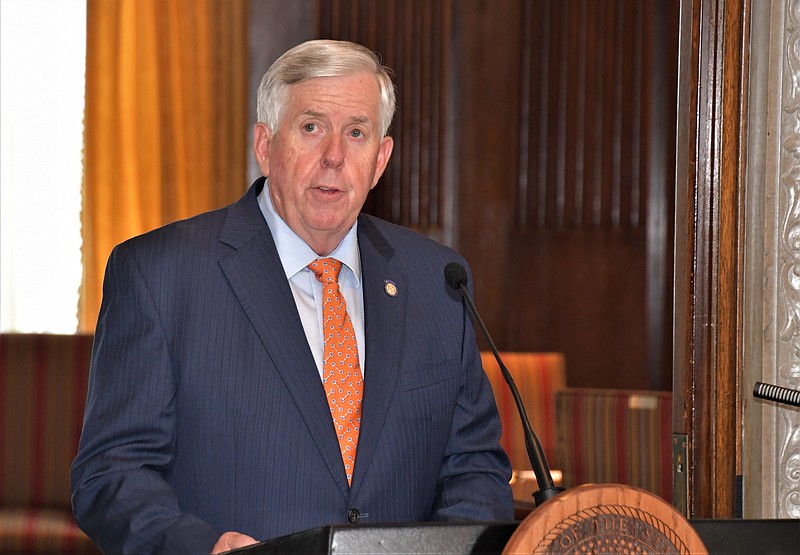Although Missouri ranks as having the fourth-highest rate of new COVID-19 cases in the nation, state leaders said Wednesday the state seems to be "turning a corner" in the COVID-19 pandemic.
Missouri's seven-day positivity rate has decreased to 12.2 percent, Gov. Mike Parson said during his weekly news conference updating the state's COVID-19 recovery efforts.
The age group with the most new positive cases remains 18- to 24-year-olds. Its positivity rate is decreasing as well and looks to be turning the corner, Parson said.
"COVID-19 deaths - by month - are also showing a downward trend. In April and May, over 7 percent of all observed COVID-19 cases were, sadly, fatal," he continued. "That number quickly dropped to 1.9 percent of cases in June, 0.9 percent in July, 0.8 percent in August, and is currently at 0.3 (percent) so far in September."
Hospitalization rates remain stable, he said.
All the numbers are "encouraging," Parson said.
Four of the new testing machines Washington University developed are expected to arrive at the state health lab this week, he said. They will be distributed throughout the state. The federal government is expected to ship 150 million tests by the end of the year, he said. Of those, 3 million are to come to Missouri.
"We know what our hospital capacities are. We know what our fatality rate is," Parson said. "Those numbers are stabilizing in the state."
Officials know the generation of 18- to 24-year-olds is "spiking the numbers up."
It all has to be taken into consideration.
Pfizer has submitted an amended protocol to the U.S. Food and Drug Administration to expand its COVID-19 vaccine trial. It hopes to know more by the end of October, Parson said.
Dr. Randall Williams, director of the Missouri Department of Health and Senior Services, said states had received recommended strategies from the Centers for Disease Control and Prevention on how to plan and operate a vaccination response to COVID-19.
"We've already been working on that, anticipating this," Williams said. "(It) follows up on what we've been doing, which will be a phased-in approach."
Health officials hope to have a vaccine in November, he said.
When it does arrive, the CDC says in its guidance, limited doses of the vaccine will be available for Phase 1.
It will start with people who provide direct care and who maintain social functions, as well as those who are at highest risk of developing severe illnesses from COVID-19, the guidance explains.
"Focus initial efforts on reaching the critical populations listed above," it states. "Ensure vaccination locations selected can reach populations, manage cold chain requirements, and meet reporting requirements for vaccine supply and uptake."
A large number of vaccinations should be available for Phase 2.
"Focus on ensuring access to vaccine for members of Phase 1 critical populations who were not yet vaccinated as well as for the general population; expand provider network," the guidance says.
In Phase 3, there should be a sufficient supply of vaccine doses for the entire population.
"Focus on ensuring equitable vaccination access across the entire population," the guidance says. "Monitor vaccine uptake and coverage; reassess strategy to increase uptake in populations or communities with low coverage."

